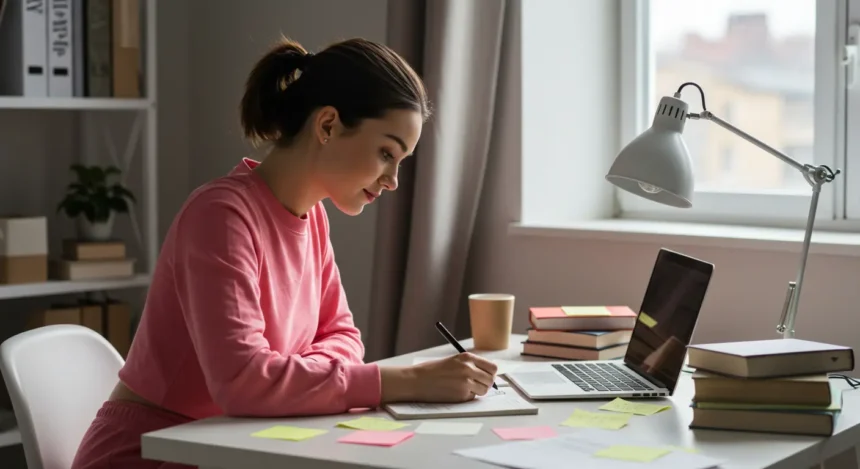Social media permeates so much of contemporary life, providing connection, entertainment and a platform for self-expression. “But the convenience and the dopamine involved can be extremely damaging.” Many of us have a serious addiction to platforms like Instagram, TikTok, and Facebook, with detrimental effects on mental health, productivity, and even relationships.
If you’ve reached the point where you’re scrolling mindlessly instead of living in the moment, or puzzling over how to get Instagram unblocked at work so you can catch up on your feed, this post is for you. Here, we will consider what causes social media addiction and how you can kick the habit and stay in control of your digital life.
What is Social Media Addiction?
Social media addiction is defined as excessive and compulsive use and abuse of social media applications and (sub-)domains, resulting in a dysfunction in individuals’ daily lives. Overuse has been associated with heightened stress, anxiety and feelings of inadequacy. These platforms use algorithms to keep you engaged turning you into a junkie, constantly checking, comparing, craving affirmation in the form of likes and shares.
The Impact of Social Media Overuse
- Decreased mental health: Elevated feelings of loneliness, FOMO (fear of missing out), and low self-esteem.
- Reduced productivity: Spending hours on endless feeds instead of tackling work or personal goals.
- Strained relationships: More screen time, less face-to-face interaction with family, friends, or coworkers.
To be addicted to social media does not mean that you are morally weak or deficient; you are simply using these platforms for what they were designed to do. The first step to regaining control is called awareness.
Understanding Triggers Behind Social Media Addiction
Everybody’s triggers are different, but common ones include boredom, loneliness or a desire for validation. To change your habits, it’s important to start by understanding what’s drawing you to keep checking your notifications or scrolling past your bedtime.
- Boredom as a trigger: Do you habitually open your favourite app when idle, like waiting in line or during commercial breaks?
- FOMO and comparison: Do you instinctively want to see what others are doing, compare it to your life, and seek reassurance that you’re not missing out?
- Validation-seeking behaviour: Does uploading photos or posts make you anxious for likes and comments as a form of social approval?
Start by journaling your thoughts and emotions about social media use. Self-awareness enables you to recognize habits and break the cycle.
Setting Boundaries to Regain Control
Setting boundaries is the most immediate and practical step to take control of your social media habits. Here’s how you can start:
Limit Daily Usage
Set a target (e.g., 30 minutes per day) and use apps to help you stay under this limit. Features like Screen Time on iOS or Digital Wellbeing on Android can help track app usage.
Schedule “No Phone Zones”
Dedicate times of the day when social media is off-limits, such as during meals, morning routines, or workouts. This ensures more face-to-face interactions and mindful moments.
Turn Off Notifications
Reduce distractions by disabling non-essential app notifications. Without constant pings, you’ll feel less tempted to check your phone.
Use Apps with Intent
Before opening an app, ask yourself why you are logging in. Is it to connect with a specific friend or to aimlessly scroll? Be intentional in your use.
Mindful Alternatives to Social Media
Replacing screen time with enriching activities can help curb compulsive use. Here are some creative alternatives to try:
- Pick up a hobby: Learn photography, painting, or cooking to stimulate your creativity without a screen.
- Physical activity: Exercise not only releases endorphins but also boosts mental clarity.
- Connect offline: Schedule coffee dates or phone calls with friends for a genuine connection.
- Journaling: Keep track of gratitude and goals to reflect positively without needing external validation.
- Read inspirational material: Instead of spending hours scrolling, browse websites or books with uplifting messages, like Friday inspirational quotes for weekly motivation.
Doing something meaningful with your free time will break the routine of idle scrolling and help you rediscover joy in the real world.
Strategies for a Complete Digital Detox
If your social media use feels overwhelming, detox strategies can help reset and rebalance your habits:
- Take a one-day break: Spend a full day away from all platforms. Instead, set clear goals for what you’ll do, such as spending time outdoors or decluttering your space.
- Delete or log out of apps: To reduce impulsive usage, temporarily remove apps like Instagram or TikTok from your phone.
- Replace digital downtime: Fill moments of boredom with offline activities like journaling, playing an instrument, or practising yoga.
- Announce your detox: Share your decision with friends or family to be accountable and gain their support.
Remember, a detox doesn’t have to be permanent. It’s an opportunity to reflect and reevaluate your digital habits.
Tools and Apps for Better Digital Habits
Fortunately, there are tech solutions that can help manage your tech problem. Consider these tools designed to build better boundaries:
- Focus Mode Apps: Tools like Forest or Freedom help block social media apps during work or study hours.
- Time Trackers: Apps like RescueTime monitor your daily usage, flagging overuse patterns.
- Meditation Apps: Platforms like Headspace encourage mindfulness, helping you replace mindless scrolling with grounding practices.
- Digital Wellbeing Tools: Both ios and Android have built-in screen monitoring options to help limit app usage and track progress.
By pairing these tools with your intent to spend time online more purposefully, you’ll find it easier to stick to your goals.
Seeking Support When Needed
For some, social media addiction may require more than a DIY approach. Here’s when and how to seek professional help:
- Consistent feelings of anxiety or depression related to social media use.
- Interpersonal conflicts arise from excessive usage or disengagement from relationships.
- Lack of self-control impacts responsibilities like work, school, or health.
Counseling or therapy can offer personalized fixes, whether in the form of cognitive-behavioral therapy or by hiring a coach who specializes in digital habits.
Services like BetterHelp and Talkspace match users with licensed therapists who can address issues related to online dependences. As a reminder, asking for help is a sign of strength, not an indication of your weakness.
Rediscover Balance and Joy in a Digital World
Social networks should be a part, not the sum total, of your life. By learning what triggers you have, how to set boundaries, and how to focus on mindful alternatives, you can get control over your digital habits and start living a balanced, joyful life.
They all add up, whether it’s 15 fewer minutes of screen time a day or just one good moment you share offline. If you’re all ready to commence with your digital detox, proceed. The less you scroll, the more you will be able to concentrate on what really matters to you.






